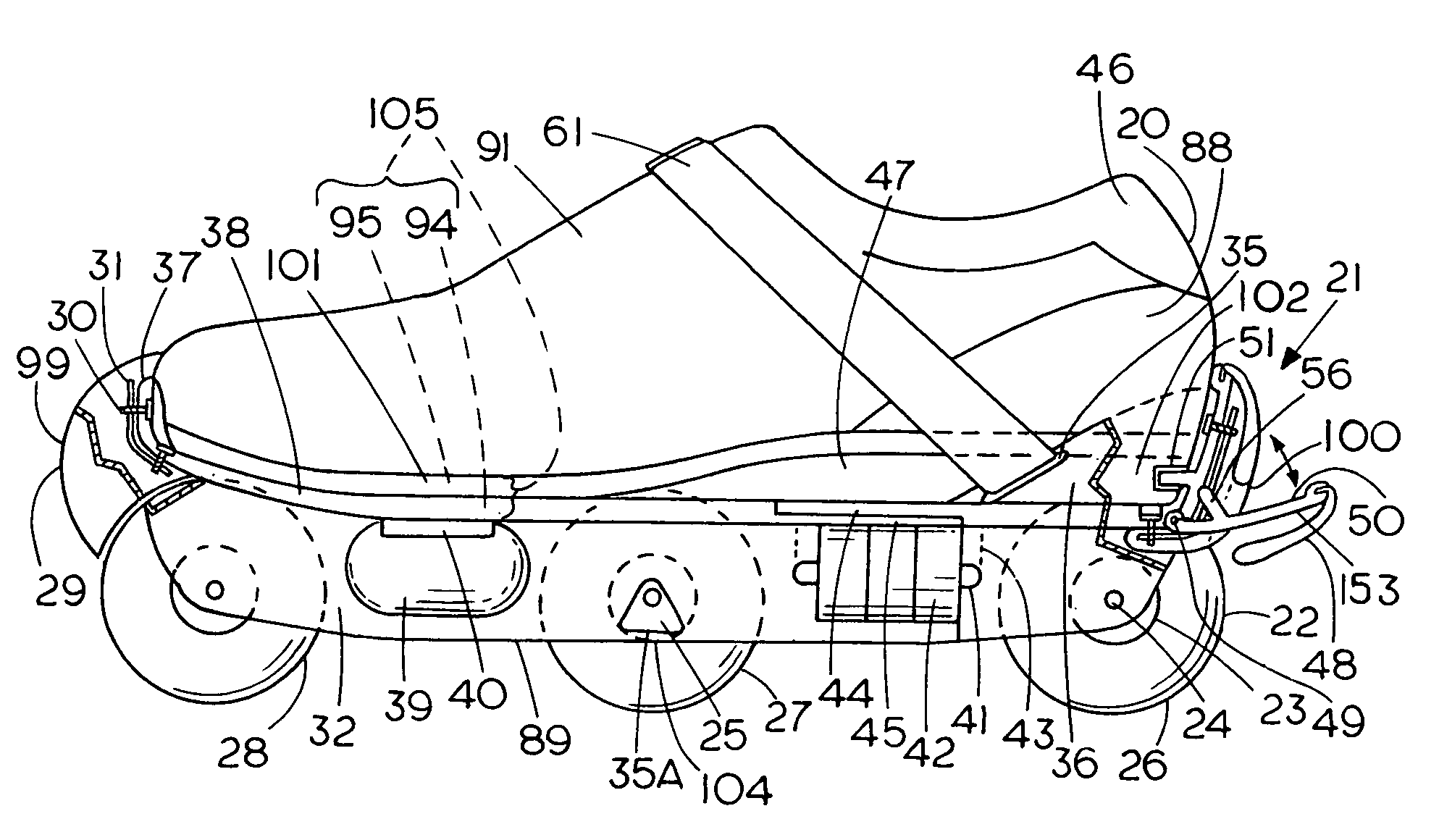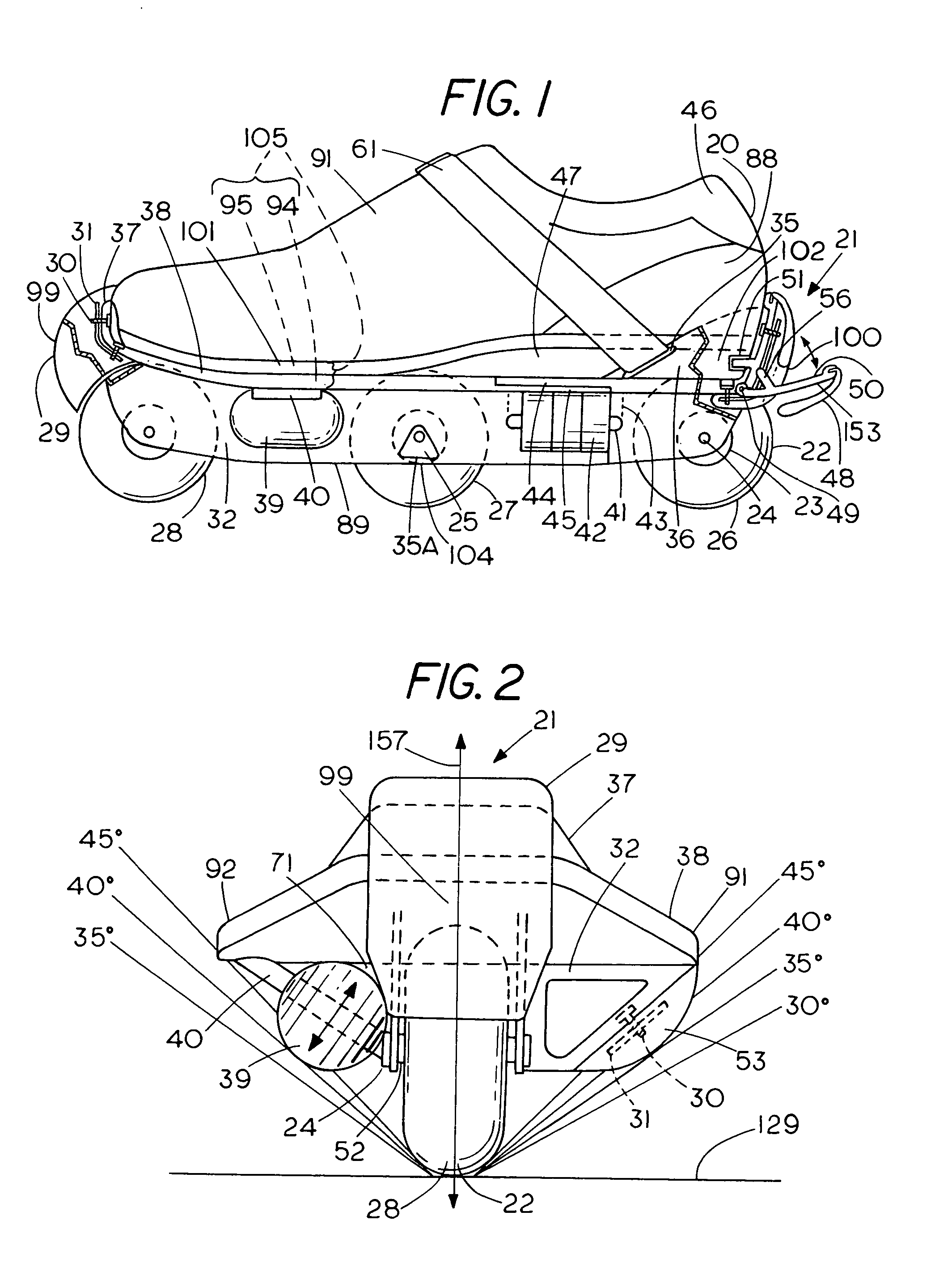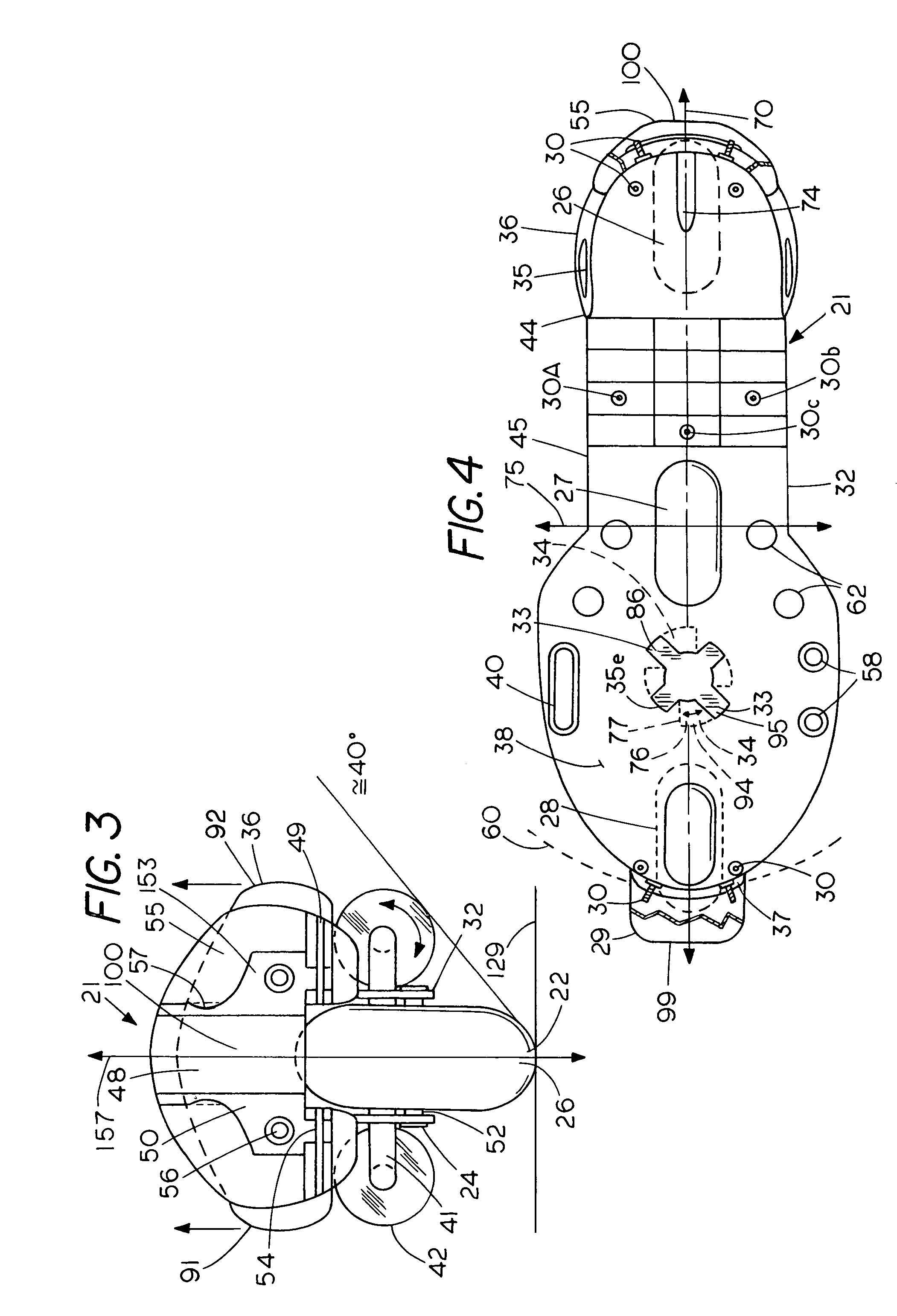A few modern wheeled skate uppers can be removed, but most are not intended to be selectively removable.
If and when removed from a wheeled skate, these uppers are normally unsuitable to stand alone and serve as a conventional article of footwear.
These types of wheeled skates are often relatively large, awkward, heavy, and expensive.
They generally do not breathe well, and as result can be hot and uncomfortable.
Wheeled skates of this kind are not easy to transport, and take up considerable space when packing and traveling.
However, these attempts to re-introduce a more conventional and selectively removable shoe upper have not met with great commercial success.
However, the present inventor believes that there are other reasons for the commercial failure of these initiatives.
This is one of the bottlenecks or problems which has stifled the industry.
The hockey skate is faster, but it is both less maneuverable and less capable of providing high quality skating relative to the figure skate.
Many of the maneuvers commonly performed by figure skaters are simply not possible on a hockey skate.
The relatively
high elevation of conventional in-line skates makes skating more difficult for the general public, and likely contributes to many of the falls and injuries which are experienced during in-line skating.
In fact, the speeds provided by current in-line hockey and speed skates can be unmanageable as concerns safety and braking, in particular, given the presence of hilly
terrain or a traffic filled environment.
Today, most wheeled skates are simply too fast to effectively control given the height at which the foot is elevated, the hazards present in an urban or suburban environment, and the lack of truly effective braking systems.
The adoption of the hockey skate geometry and model, and focus on attaining high speeds has limited the potential of wheeled skates to meet other criteria with respect to skating, such as the
consumer's desire for a non-
impact form of
aerobic exercise and safety.
Both of these side
stroke styles place considerable loads upon the
ankle, knee, hip, and lower back of skaters.
In truth, the side
stroke skating style is more taxing on the
anatomy, and more likely to result in injury than the relatively linear stroke technique used in figure skating.
The side stroke skating style is also harder to learn and to manage than the linear stroke technique.
The side stroke skating style also requires considerable space in order to execute.
On a sidewalk or street, the presence of cars and pedestrians and the danger of collision renders the side stroke style somewhat less safe or manageable.
This technique requires numerous quick side strokes in order to
gain elevation, and is both physically taxing and inefficient.
However, there appears to be no teaching with respect to the use of a step-in bicycle cleat
system in the wheeled skate prior art.
When speaking of in-line wheeled skates, it is not really possible to introduce rocker in a two-wheeled skate, but such is possible with skates having three or more wheels.
In a quad wheeled skate, that is, in a four wheeled skate in which the wheels are not positioned in-line, it is normally not possible to perform the so-called hockey-stop braking action unless the skating surface is exceptionally smooth, and / or the frictional characteristics of the wheel and skating surface permit.
When braking on a
rough surface, the rearmost wheel can then become rapidly abraded.
Most of the existing rear mounted brakes developed for in-line wheeled skates do not develop sufficient braking power to stop a skater moving at speed within a
short distance.
Further, these rear mounted
brake systems do not generally permit the execution of rapid avoidance maneuvers while braking, that is, the act of braking is achieved at the expense of maneuverability.
These actions are not conducive to maintaining balance when stopping suddenly.
Unfortunately, these actions are generally inconsistent with the posture and movements required to successfully actuate many of the rear positioned brake systems that are presently being used on in-line wheeled skates.
This can undermine an in-line skater's ability to brake, balance, and maintain control and maneuverability during hard braking.
However, this braking maneuver quickly consumes the rear wheel of a skate, as the wheel then effectively doubles as a
brake pad.
This maneuver is also more difficult and dangerous to perform on
dry land given the relative unevenness of most skating surfaces.
Moreover, if skaters fall on
dry land they will not slide as on ice, and unlike relatively smooth ice, an
asphalt skating surface can severely
cut and abrade.
Further, while in-line wheeled skates can provide advantages in speed and maneuverability for a proficient skater, they are not as stable or forgiving for use by the general public as quad wheeled skates.
 Login to View More
Login to View More  Login to View More
Login to View More 


